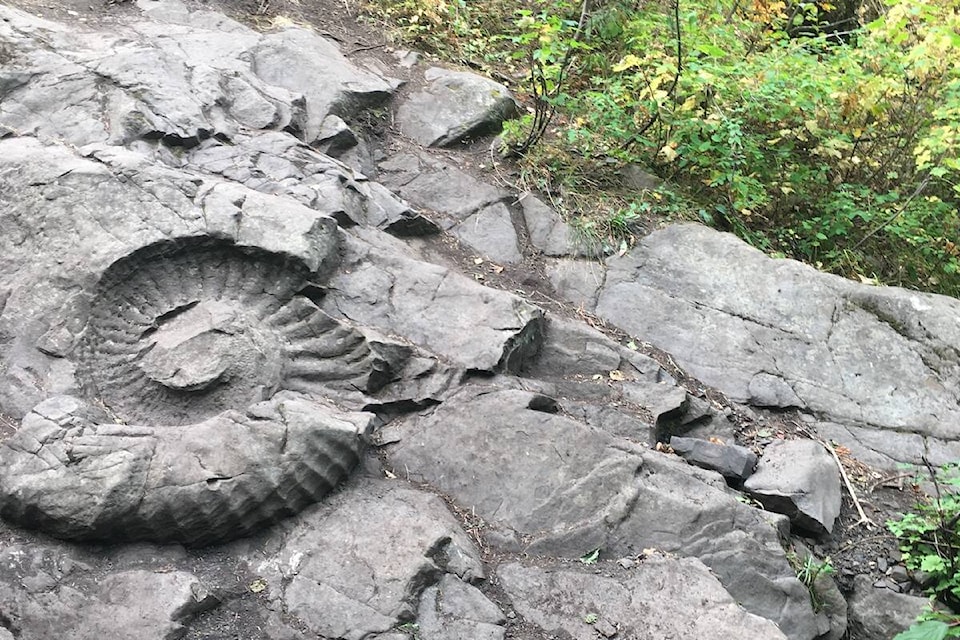Plans to preserve the famous ammonite fossil near Fernie fell through at the last minute last year, with the land-owner walking away from a funded agreement.
The ammonite fossil Titanites accidentalis preserves the remains of a 1.4 m carnivorous cephalopod that lived and died some 150 million years ago. It is a well-known attraction in the Fernie area, and according to Wildsight volunteers, has degraded over time as it has become more well-known.
In early 2021, Wildsight applied for funding from the Columbia Basin Trust’s (CBT) Community Initiatives Program, with the request for almost $6,000 being approved - but the funding never went anywhere.
“We were very excited about the grant,” said Wildsight volunteer, Lee-Anne Walker.
“We had been working with the provincial government out of Victoria, with (the Ministry of Forests, Lands and Natural Resource Operations). We were ready to go, and the landowner denied us access,” she said.
The ammonite fossil is located on land owned by forestry company, CanWel.
“CanWel did not want to participate in the project in the end. They felt that there was undue liability for them, so without their permission we did not proceed with the project,” said Walker, who noted they had received verbal support from CanWel representatives before applying for the grant.
The grant was approved as CanWel withdrew, so the $5,750 assigned to the project, ‘Protecting Stories in Stone’, was never used, and remains with the CBT.
READ MORE: Wildsight looks to safeguard famed fossil
The project had been supported by Tourism Fernie, the Fernie Trails Alliance and the Fernie Museum, and would have seen access and signage improved in order to make getting there safer, and also to protect the fossil itself.
According to Walker, those who go to see the fossil often get lost, either from parking in the wrong place or from walking up the wrong path. There is currently no official parking or access route to the fossil, which is 6km from the logging road, along an irregularly-defined path that goes through bush and along a creek-bed for some sections.
The project would have seen parking better organised and keep tourists safe from industrial traffic. The path would have also been more clearly marked, and signage at the fossil itself would have both educated visitors, and warned them not to climb on it.
“(The fossil) is degrading because people are inappropriately interacting with the fossil – they’re sitting on it, walking on it. It’s deteriorated in the 30 years since I first saw it,” said Walker.
While the project from 2021 is dead, Walker said that there were still ongoing hopes that the fossil would be protected and preserved through partnerships with the landowner going forward.
CanWel did not respond to requests for comment.
